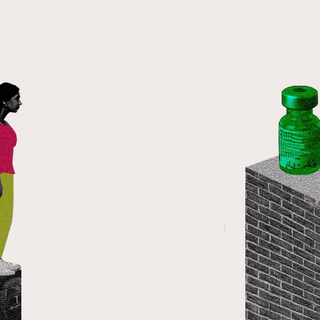We know that microplastics — fragments of plastic that are less than five millimeters in length — are everywhere: the soil, rain, water, air, clothes, and even in our food. They’ve even contaminated our bodies already. Now, nanoplastics — a class of plastic particles thought to be even smaller than microplastics, but with no consensus on a definition yet — represent a new threat that could be even more difficult to contend with. With the debate to properly define nanoplastics continuing, we still don’t know much about how nanoplastics affect our health, but we’re beginning to find out — at a cellular level.
A group of scientists in China, in a study published late last month in the journal Environmental Science and Technology, have now learnt how nanoplastics affect human organs, such as the liver and the lungs. The researchers chose these two organs in particular as humans are most likely to ingest nanoplastic particles through their food, or inhale them in through the air. Some earlier studies have observed the presence of nanoplastics and microplastics in the environment and their impact on human health, but none so far have clearly displayed studied how bodily functions are affected by these particles.
For their study, the scientists created separate cultures of human liver and lung cells in laboratory plates and then treated those cultures with varying amounts of 80-nanometre (where 1nm = 0.000000001m) wide particles. On observing the plates through an electron microscope after two days, the researchers observed that nanoplastics had made their way into both liver and lung cells without killing them. To understand the impact of their entry in these cells, the scientists closely inspected the mitochondria — organelles that generate the chemical compound adenosine triphosphate (ATP), which cells use as an energy source.
Related on The Swaddle:
Plants Can Absorb Nanoplastics, Causing Adverse Effects for Ecology, Food Safety
“… transmission electron microscopy analysis showed that the nanoplastics could enter the cells and cause mitochondrial damage,” the researchers wrote. They further observed that liver and lung cells produced more reactive oxygen species — oxygen variants that can cause irreparable damage to the DNA — on interacting with nanoplastics.
But it doesn’t stop here: they also found that the quantities of nucleotides, nucleosides, amino acids, peptides, and carboxylic acids — all crucial byproducts of metabolism — that the cells produced varied greatly from the usual numbers, indicating that metabolic processes became unbalanced when nanoplastics entered them. Scientists further observed that metabolic function was more severely impaired in liver cells than in lung cells.
This indicates that even though organ cells didn’t die due to a nanoplastic invasion, they can drastically disrupt metabolic processes, which can then lead to metabolic disorders such as diabetes. Other symptomscaused by metabolic imbalances include severe weight loss or gain, jaundice, lethargy, and seizures.
The study comes at a time when there is increasing caution about the presence of microplastics and nanoplastics in environment. A recent study, for instance, observed that microplastics present in the soil are absorbed by plants and travel across the food web. Earlier studies have reported finding these particles even in baby poop. This indicates that the existing plastic in the world is in a constant loop, apart from all the newer plastic that is manufactured every day.
Some studies in the past have observed that antarctic krill could help disintegrate microplastics into even finer particles — or nanoplastics. But with the current research indicating that nanoplastics are equally harmful as microplastics if not more, the question of how to manage plastic pollution remains unanswered — even as their risks loom bigger by the day.




